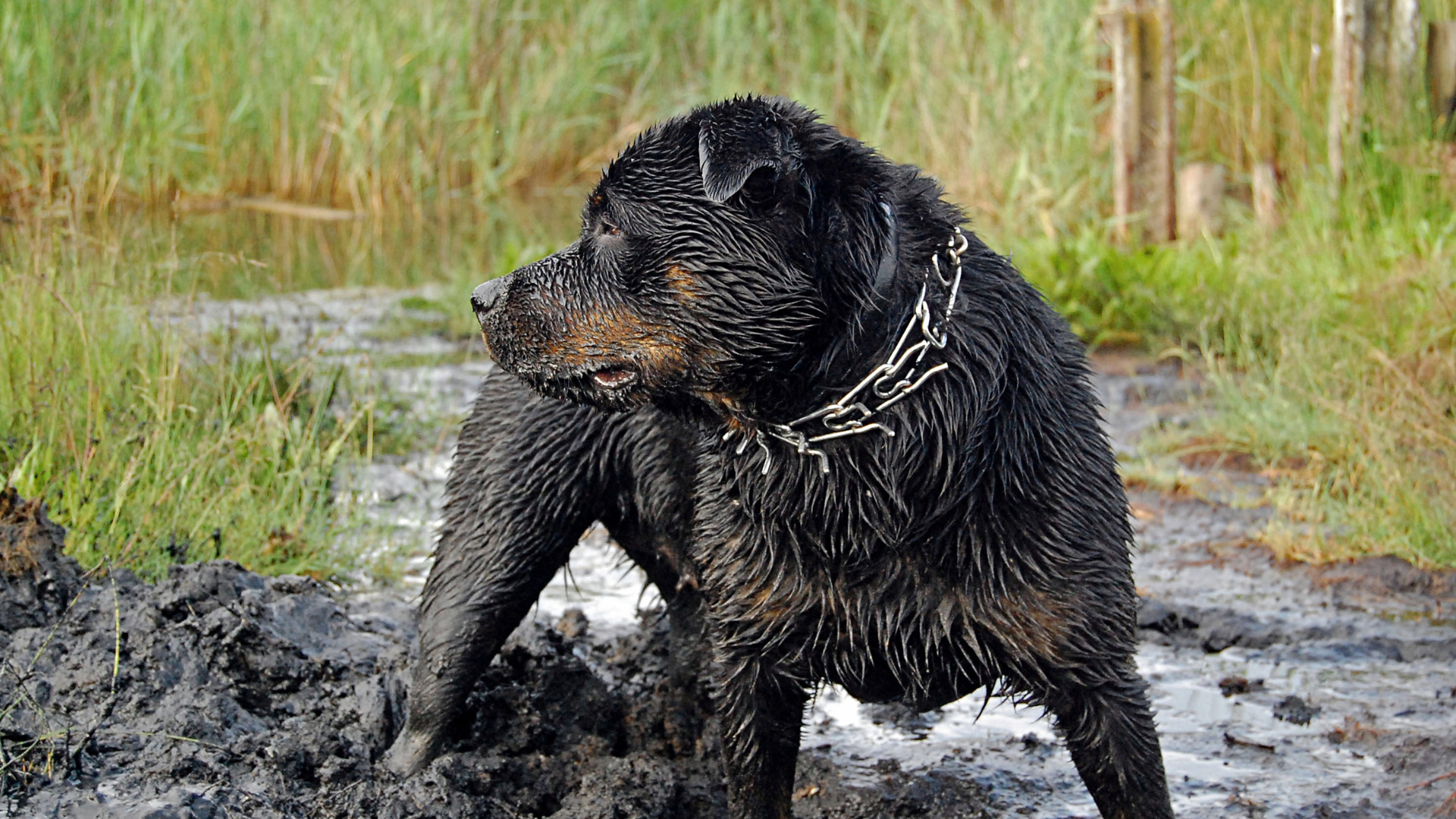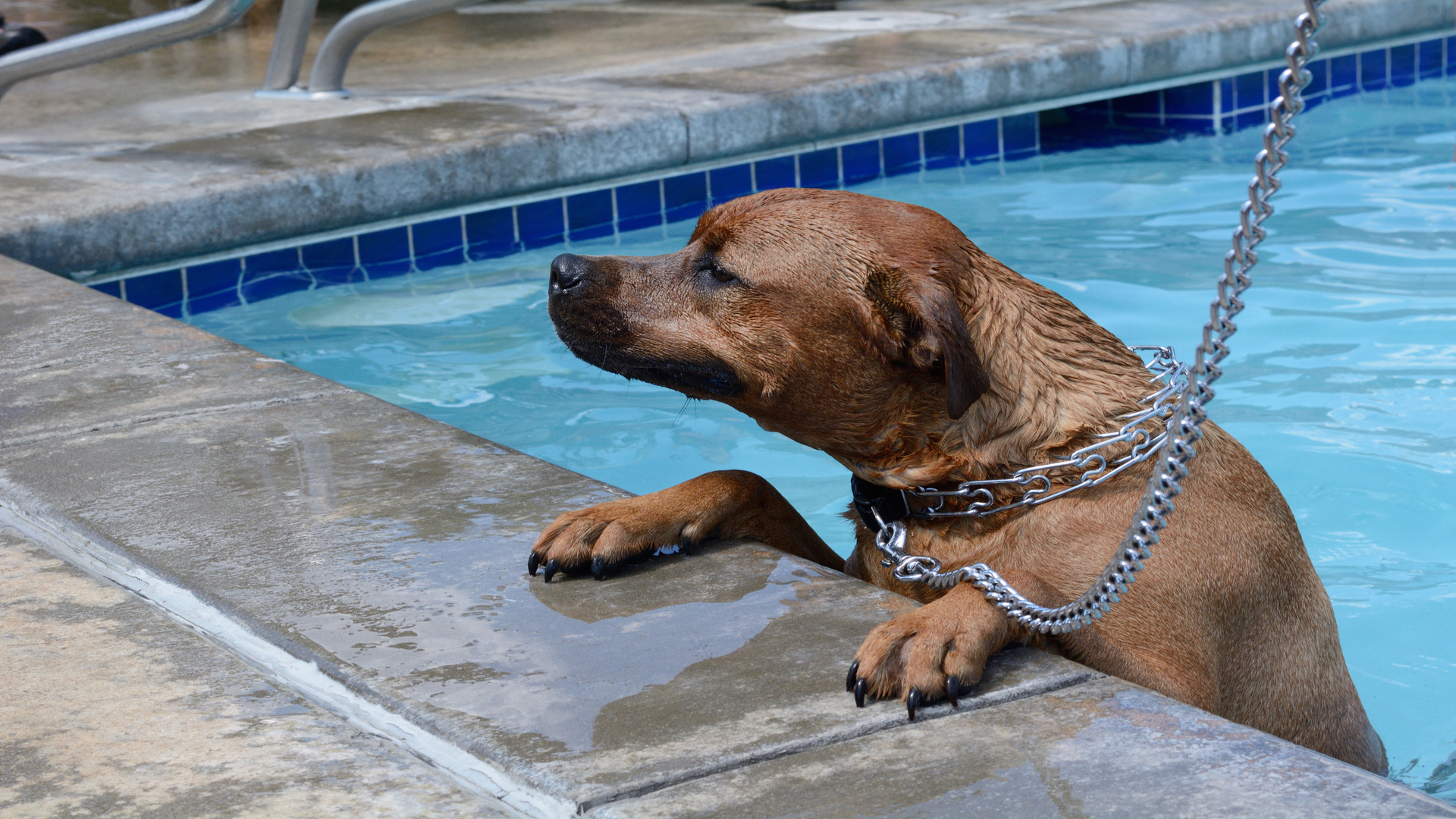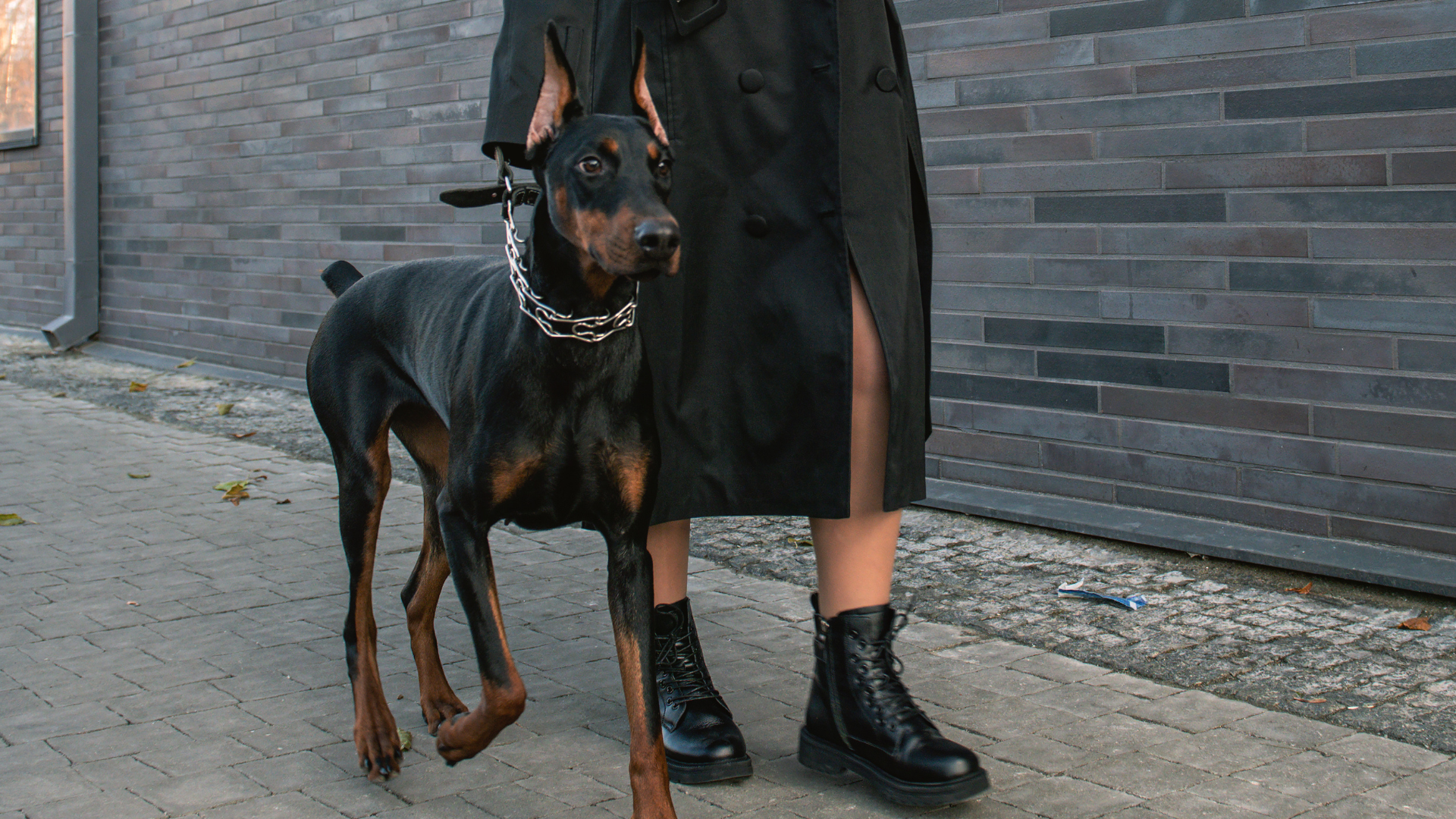Are prong collars cruel? Expert shares 3 reasons why you shouldn’t use one on your dog
A behaviorist answers, 'Are prong collars cruel?' and shares some ethical alternatives.

Why are prong collars cruel, and what alternatives exist for managing a strong-pulling dog?
Prong collars cause discomfort and pain when a dog pulls. It's an aversive method to stop a dog from pulling. As a dog behaviorist, I think prong collars are inhumane and should never be part of a training plan.
The metal spikes pinch the tender skin around a dog's neck, causing physical pain and potentially psychological damage. If used regularly, the dog's neck can develop scar tissue, dulling the sensation of the prong collar, meaning the dog continues pulling.
Dogs tend to pull against pressure, so when a prong collar tightens, the dog may pull harder and experience more pain. That causes the dog to become fearful or aggressive because it cannot escape the discomfort.
I work with owners to teach them how to get their dogs walking nicely on the leash. There are many positive alternatives to using a prong collar, such as wearing a comfortable dog harness. If you're not sure which harness is best for your furry friend, read our guide on the best dog harness.
This feature will explain why prong collars are cruel and suggest kinder alternatives for helping your dog walk nicely on a lead.
What are prong collars?
Prong collars work similarly to choke collars but have metal spikes on the inside. These spikes dig into the dog's neck and pinches the skin if the dog pulls on the leash.
Get the best advice, tips and top tech for your beloved Pets
The theory behind the development of prong collars is that they mimic the pinching action of a puppy's mother grabbing it by the skin of its neck as a correction. It's a weak theory with no scientific evidence to substantiate the claim.
One reason prong collars are cruel is that dogs learn by association, not generalization. Therefore, an adult dog will not associate the painful pinching sensation of a prong collar with when his mum grabbed his neck when he was a naughty pup.

Are prong collars cruel?
The second reason I advise against the use of prong collars is that, by design, they cause pain and physical discomfort. It's not what you want for your doggy pal when you're trying to build a bond based on trust and understanding.
When a dog pulls, the metal spikes dig into his neck. Though the pain may cause a dog to stop pulling on the leash, it can also cause anxiety, stress and fear because the dog cannot associate the collar with what he has done to cause the pain.
You might also be wondering, 'Are shock collars cruel?'
Are prong collars effective?
Prong collars are more likely to cause a dog to feel confused than teach him to walk nicely on a leash. Aside from pain and discomfort, the dangers of prong collars are that the dog might associate something else in his environment with the pain. For instance, if a child or another dog is nearby.
The third reason not to use a prong collar is that aversive training methods are not effective. They may work temporarily because the dog is surprised by pain or punishment. For humane and ethical ways to train your dog, read our feature on positive reinforcement for dogs.

Alternatives to prong collars
If your dog has a pulling habit, here are a few positive alternatives.
1. Consult a trainer or dog behaviorist who uses positive reinforcement
This person will teach you techniques for walking your dog to walk on a leash without pulling. Positive reinforcement training will help build a bond with your dog as you learn together.
2. Use a recommended harness
Harnesses avoid the risk of injury because they do not put pressure on a dog's neck. If you're unsure of the best harness for your dog, read our feature on the different types of dog harnesses.
A gentle but effective alternative to using a prong collar. It has a front-clip to help with pulling and a lightweight design that's comfortable to wear.
3. Teach your dog calming protocols
When I work with a new client, I often notice their dogs rush out of the house, pulling on the leash. Successful leash walking starts at home. Commit to short training sessions, teaching your dog not to pull by asking your furry friend to wait before charging through a door. Encourage your pup to sit by your side—reward calm behavior.
After that, on the other side of the door, call your dog's name so he turns to look at you. Reward him if he does that. In time, your dog will wait patiently, not rush through doors, and instinctively turn to wait for you.
If your furry pal is a big, strong dog, you may think you have no option other than to use a prong collar. I trained as a dog behaviorist in 2011 because of my 45kg Weimaraner X rescue with horrendous reactivity issues. Poppy pulled me over several times, causing pain and injury.
After I completed my training, I taught Pops to walk nicely on the leash with only a regular collar. Follow a positive training method, and your pup will soon become a joy to walk.
There are multiple gentle collars and harnesses to suit your dog. If you want to explore options, we have tips on choosing a harness vs collar. You might also be wondering, 'Is it safe to leave a harness on a dog all the time?'

Jan is a dog behaviorist and writer living in the Cotswolds, UK. She qualified as a dog behaviorist in 2012 after training with Sarah Whitehead, a Certified Clinical Animal Behaviorist with a MSc in Animal Behavior. Jan has shared her life with dogs for over fifty years and is fascinated by behavior. She enjoys helping people better understand their dogs to develop a deep bond and enjoy time together. Jan particularly enjoys working with impulsive and reactive dogs as her legacy from helping Poppy, her rescue Weimaraner cross overcome fear reactivity.

